|

A SELECTION OF CORBELLED DOME STRUCTURES FROM VARIOUS COUNTRIES
RENATE LÖBBECKE'S FAVOURITE PHOTOS
|
Renate Löbbecke has been tracking down corbelled dome structures for over 25 years. In her travels through 56 regions in 17 countries she has taken photographs depicting this unique phenomenon of dry masonry structures built from local stone. The extensive archive she has amassed oscillates between artistic perception and scientific examination. The results are documented in the book Corbelled Domes published by the publishing house Walther König in 2012. The German edition has for its title: Kragkuppelbauten. Although Renate Löbbecke has visited many regions in France, here the focus is on examples of corbelled domes from other countries.
For more information, see :
http://www.renateloebbecke.de/Corbelled_Domes/Corbelled_Domes.html
|
1 - France: Dordogne, near Gabillou
|
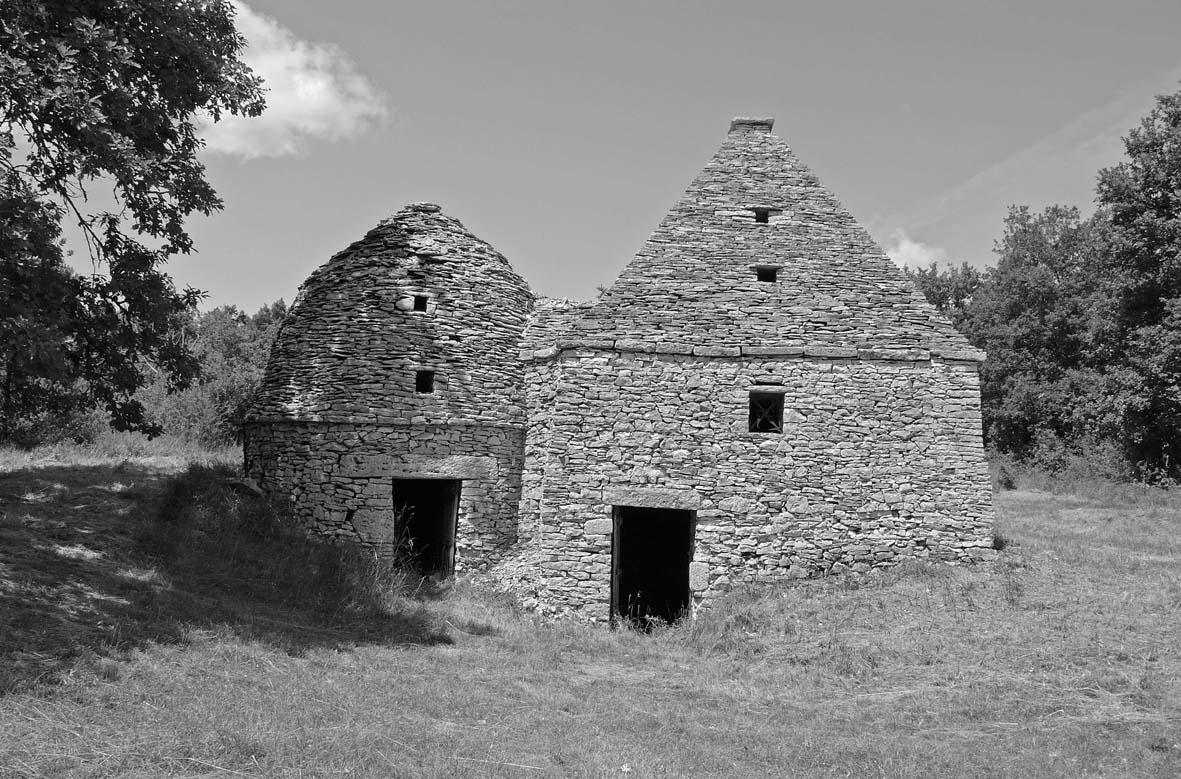 |
|
Attached to the obviously older round cabane is a perfectly built square building. Inside, three levels reaching to a height of about 7 m are still recognizable from the remaining wood beams. © Renate Löbbecke. |
|
2 - France: Dordogne, near Gabillou
|
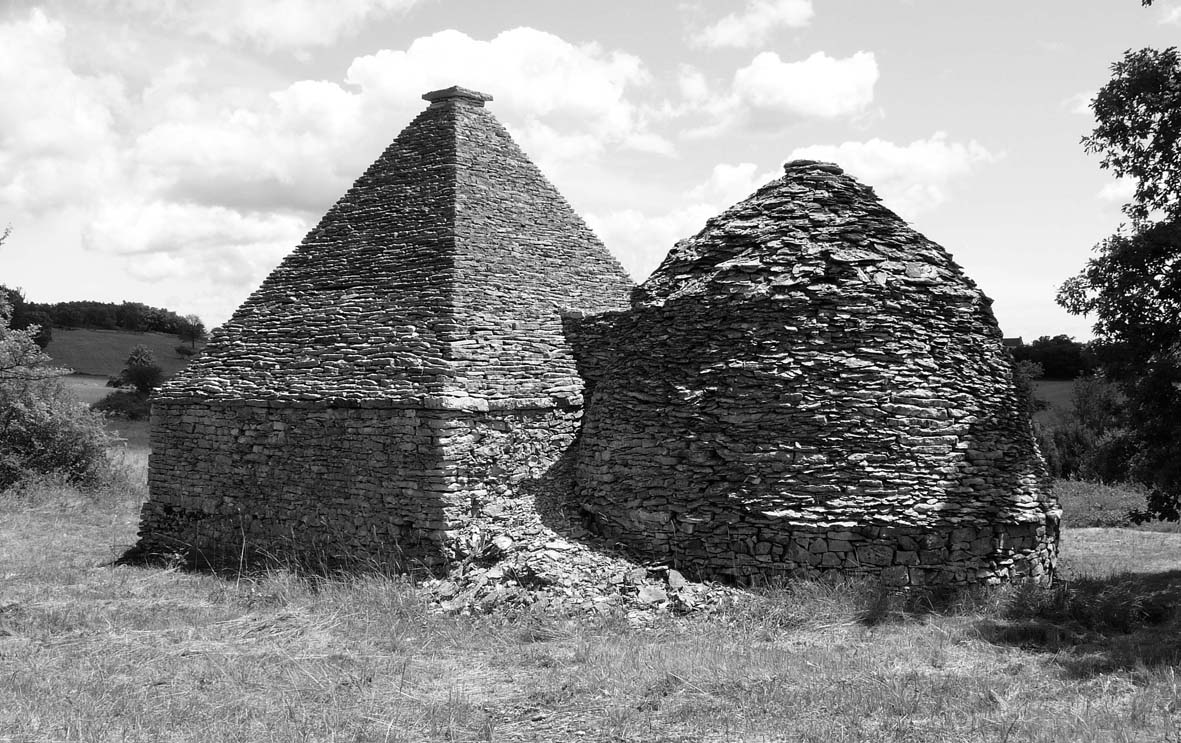 |
|
This photo of the back of the stone huts was used as the cover for the German book Kragkuppelbauten. © Renate Löbbecke. |
|
3 - France: Alpes-Maritimes, Plateau de Caussols
|
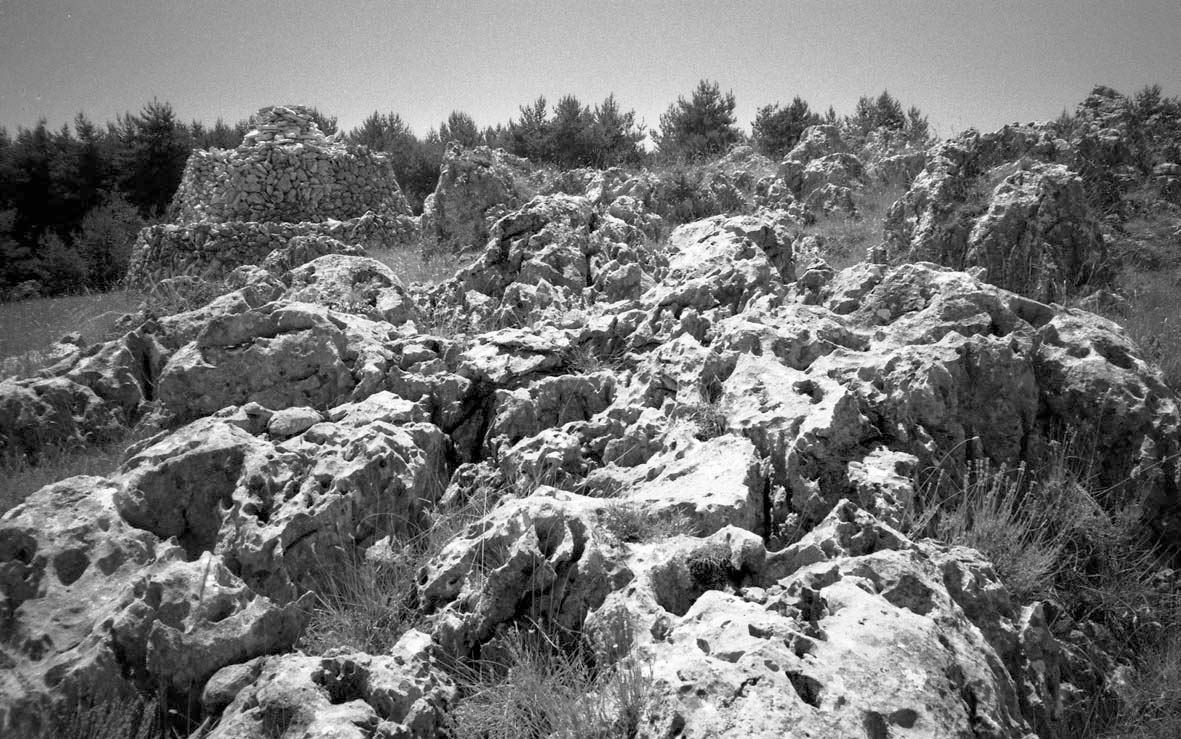 |
|
This chabot is built of very irregular stones, which is not surprising considering the fissured rock material nearby. © Renate Löbbecke. |
|
4 - Spain: Valencia, near Cati
|
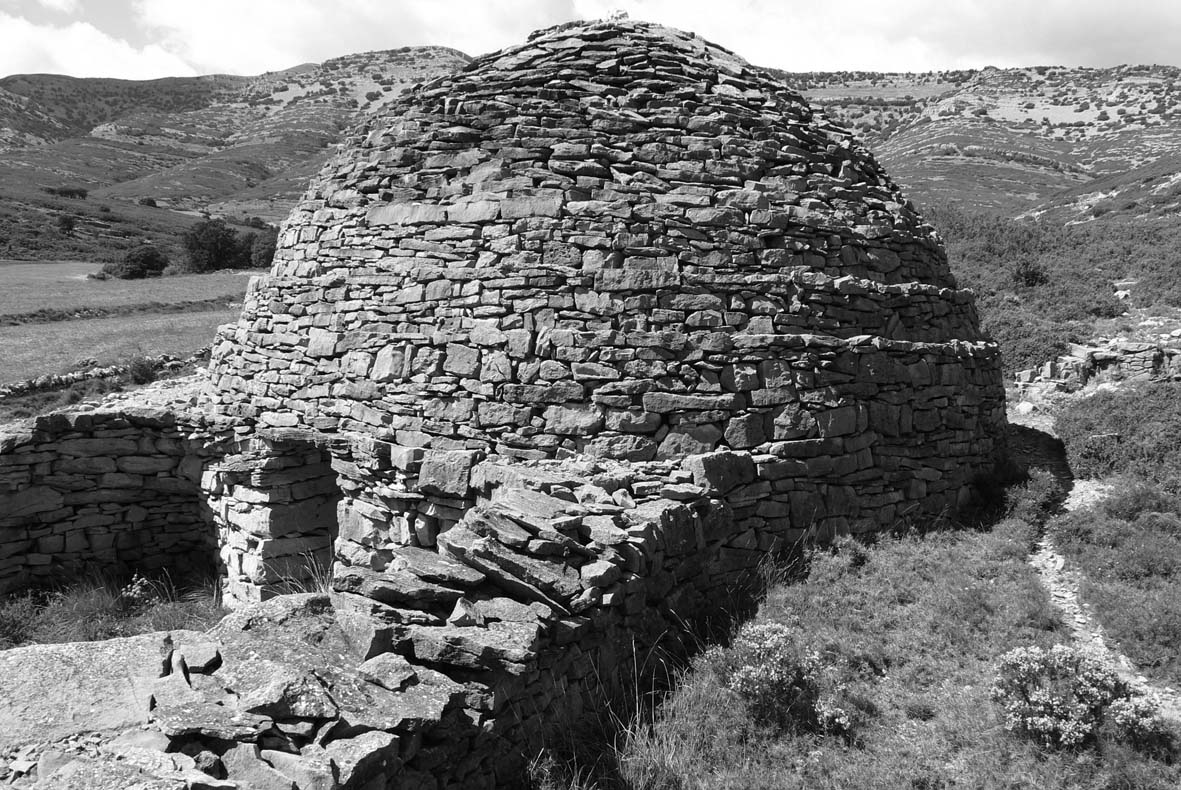
|
|
This perfect barraca with a nearly hemispherical structure was built in 1946 by Tomás de Generoa. Diameter: 8 m, height: 4,5 m. © Renate Löbbecke. |
|
5 - Spain: Extredadura, near Llera
|
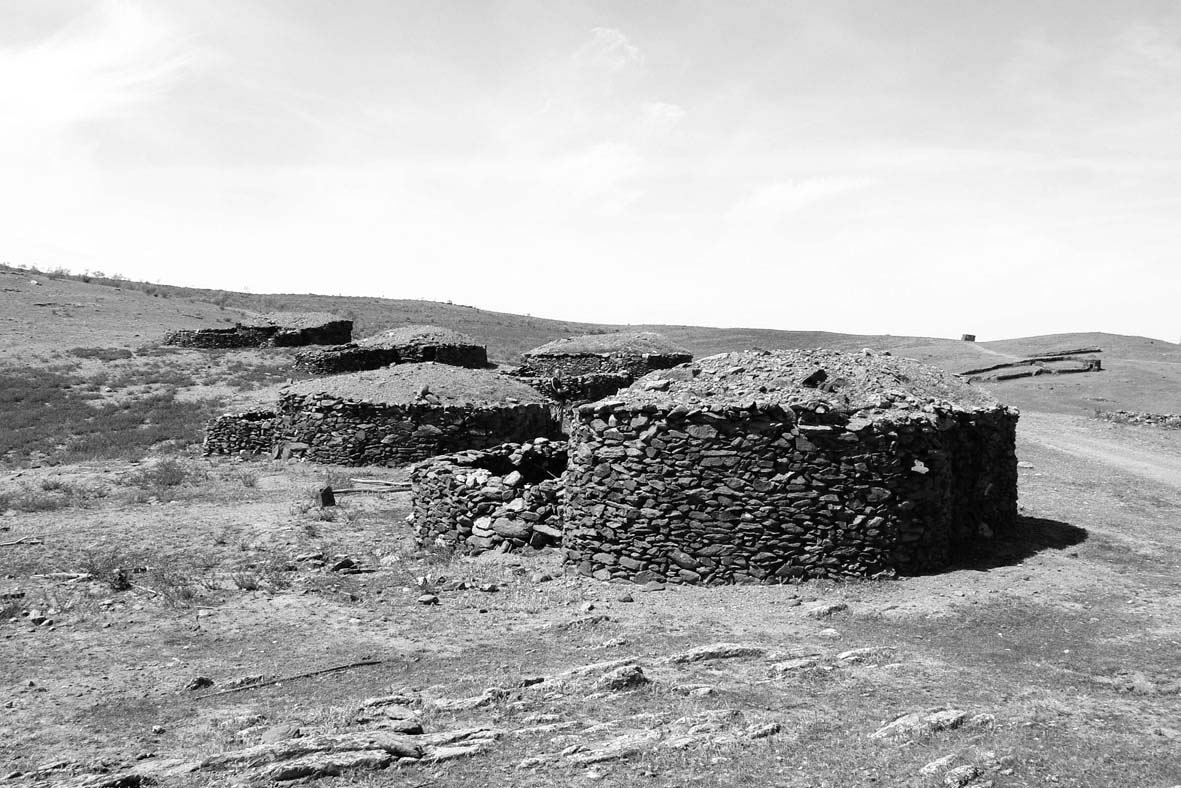
|
|
The barren hills northwest of Llera served as pastureland. These flat huts called zahurdas were stables for the renowned Iberian pigs, but are no longer in use today. © Renate Löbbecke. |
|
6 - Spain: Extredadura, near Llera
|
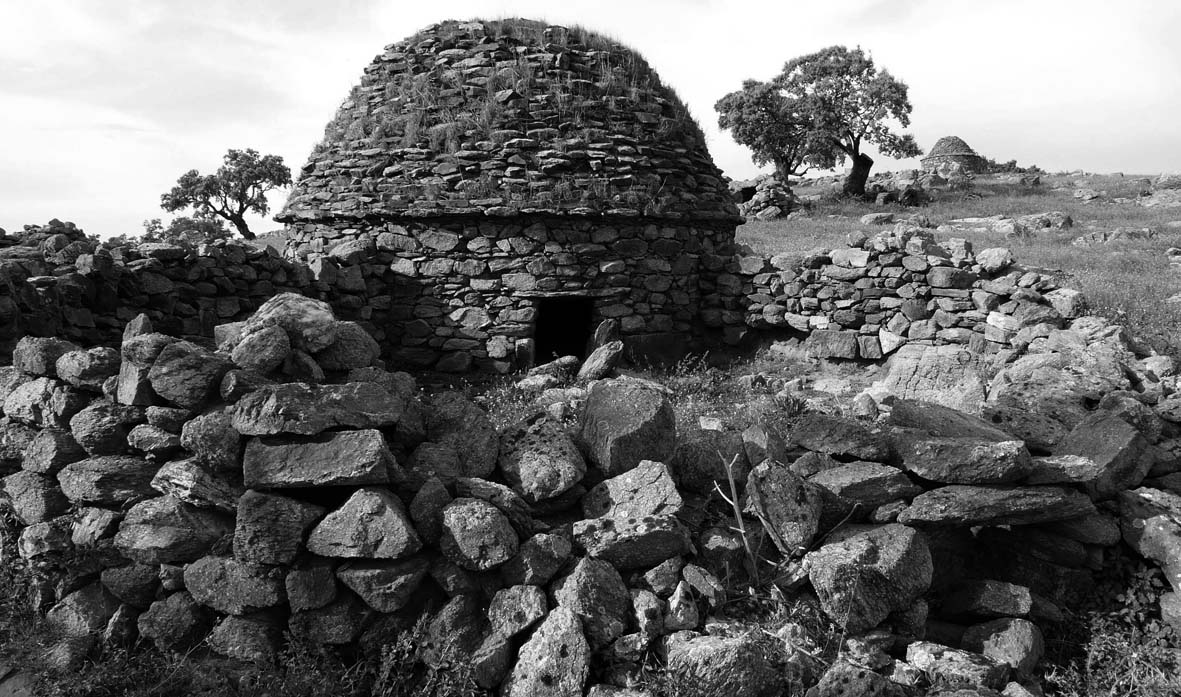
|
|
The nearly hemispherical roof of this zahurda has its eaves projecting above a vertical base. © Renate Löbbecke. |
|
7 - Spain: Extremadura, Las Hurdes, near Santibańez el Bajo
|
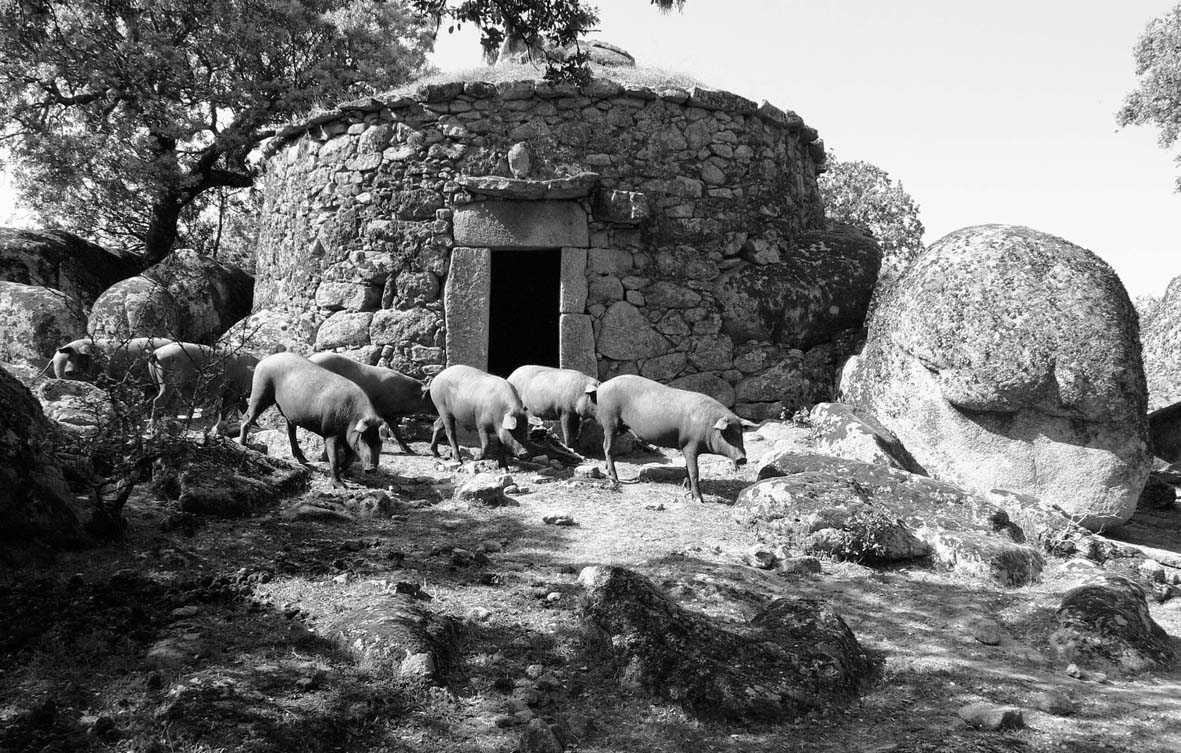
|
|
This stone hut, called muro, stands in a pasture or dehesa with oak trees, where black pigs like to graze. It is built in, on, or around large granite blocks. © Renate Löbbecke. |
|
8 - Spain: Extremadura, Las Hurdes, near Santibańez el Bajo
|
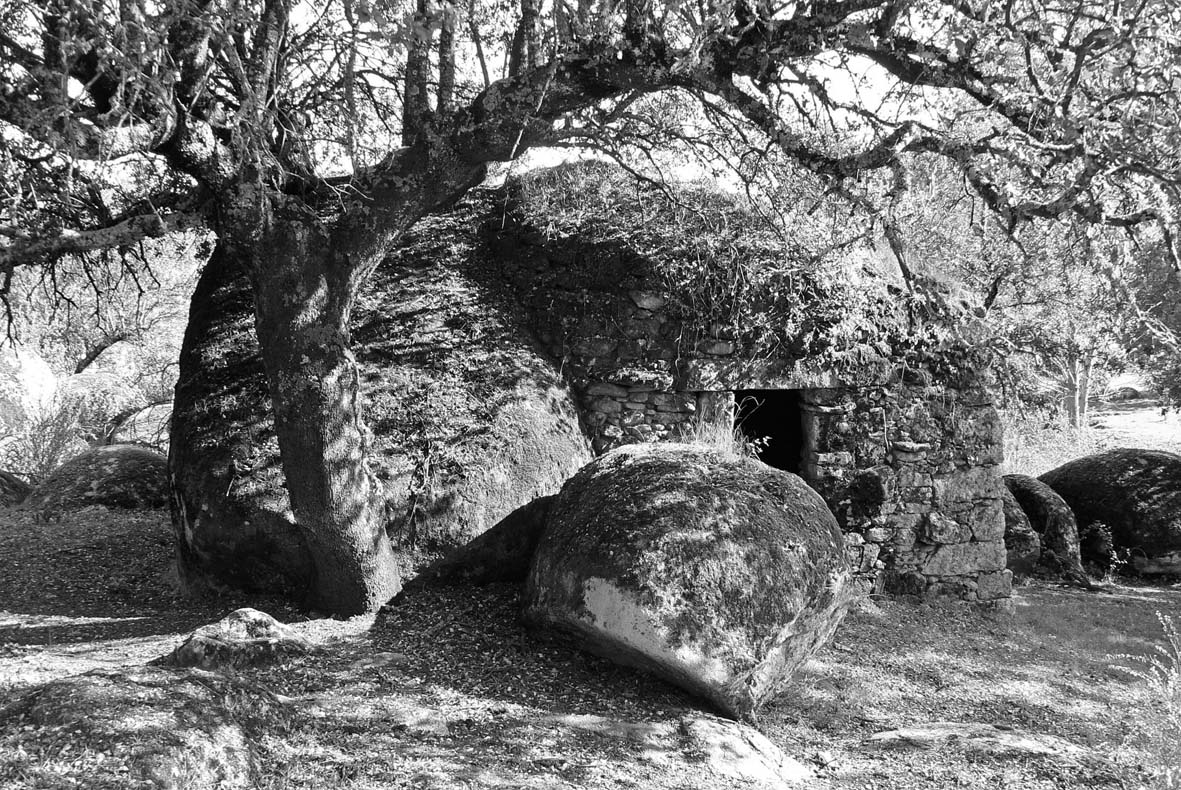
|
|
This unusual rectangular muro forms a sculptural entity with the soft curves of the surrounding boulders. © Renate Löbbecke. |
|
9 - Spain: Minorca
|
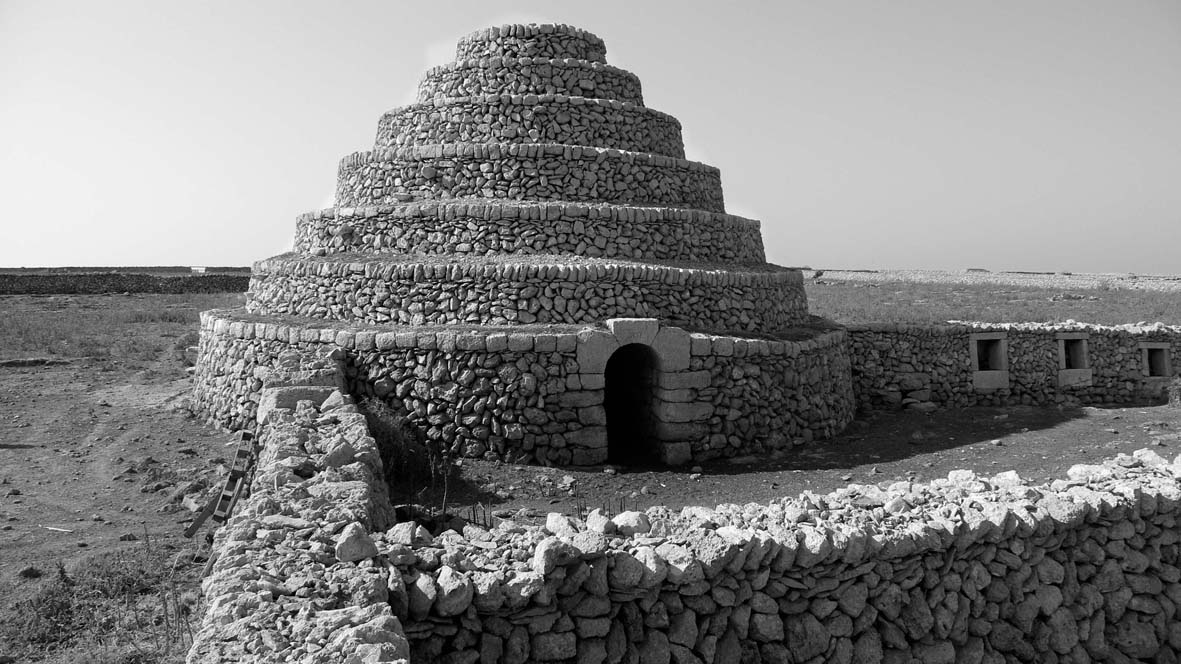
|
|
The amazing seven-tiered barraca Son Salomó is a barraca de bestiar (animal shelter) built in 1857. At the end of the 18th century an estate landowner set about constructing these special structures. A long, lateral forecourt with feeding troughs built into the walls leads to the entrance. Nearby are a cistern and water-filled drinking troughs. © Renate Löbbecke. |
|
10 - Italy: Elba
|
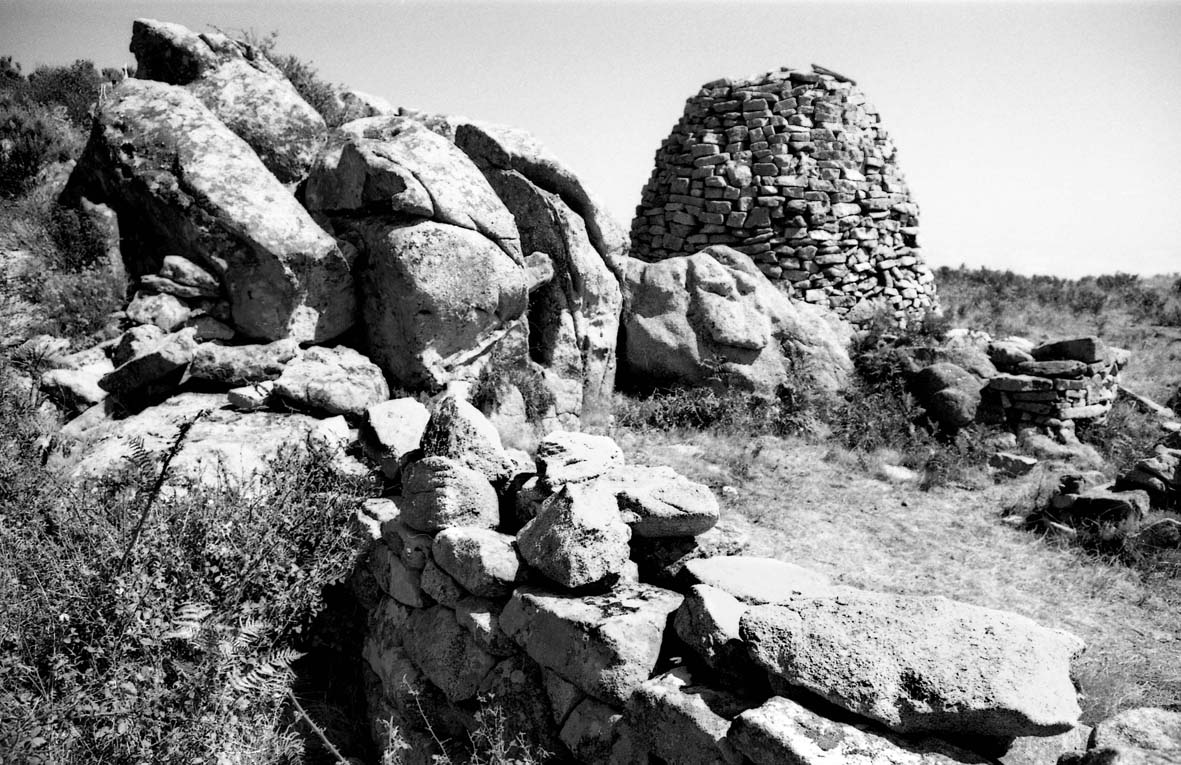
|
|
The shepherds in the western mountains of the island built these shelters, called caprile, from the available granite rock. © Renate Löbbecke. |
|
11 - Italy: Apulia, Alberobello 1981
|
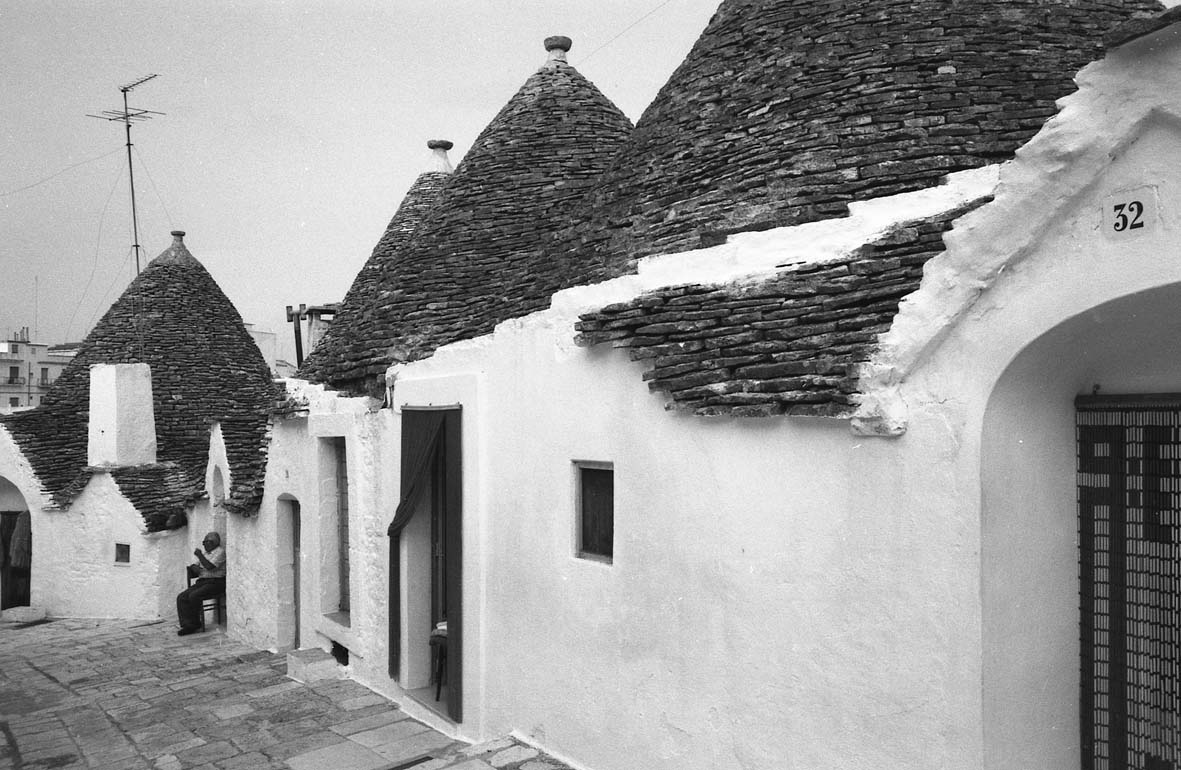
|
|
In Europe, only the Murgia dei Trulli in Apulia boasts corbelled dome structures, called trulli, as permanent dwellings. In 1981, when I first visited Alberobello, the trulli were still inhabited by ordinary people and not just used as tourist shops like today. © Renate Löbbecke. |
|
12 - Italy: Apulia, Bari region
|
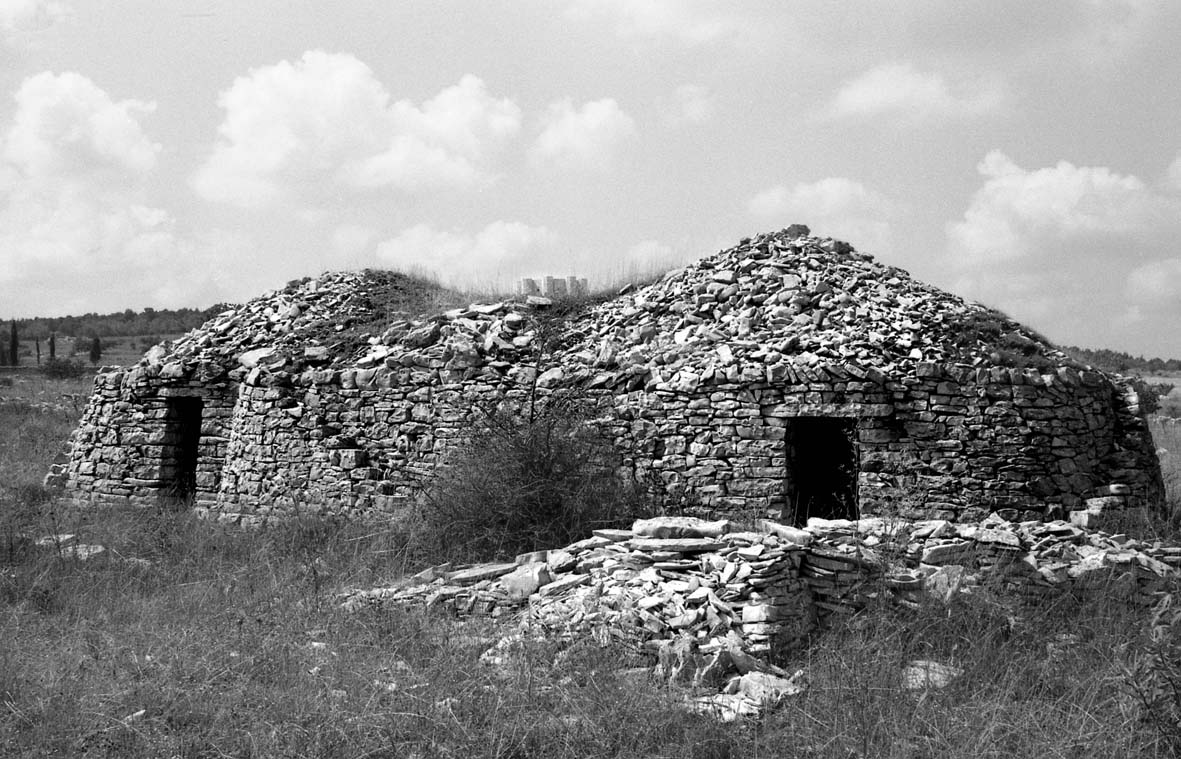 |
|
As can be seen in the distant background these casedde are situated near the Castel del Monte. Apulia is an eldorado for corbelled dome structures. Besides
the popular trulli many different variations can be found throughout the region. © Renate Löbbecke. |
|
13 - Italy: Apulia, Murge Tarantine
|
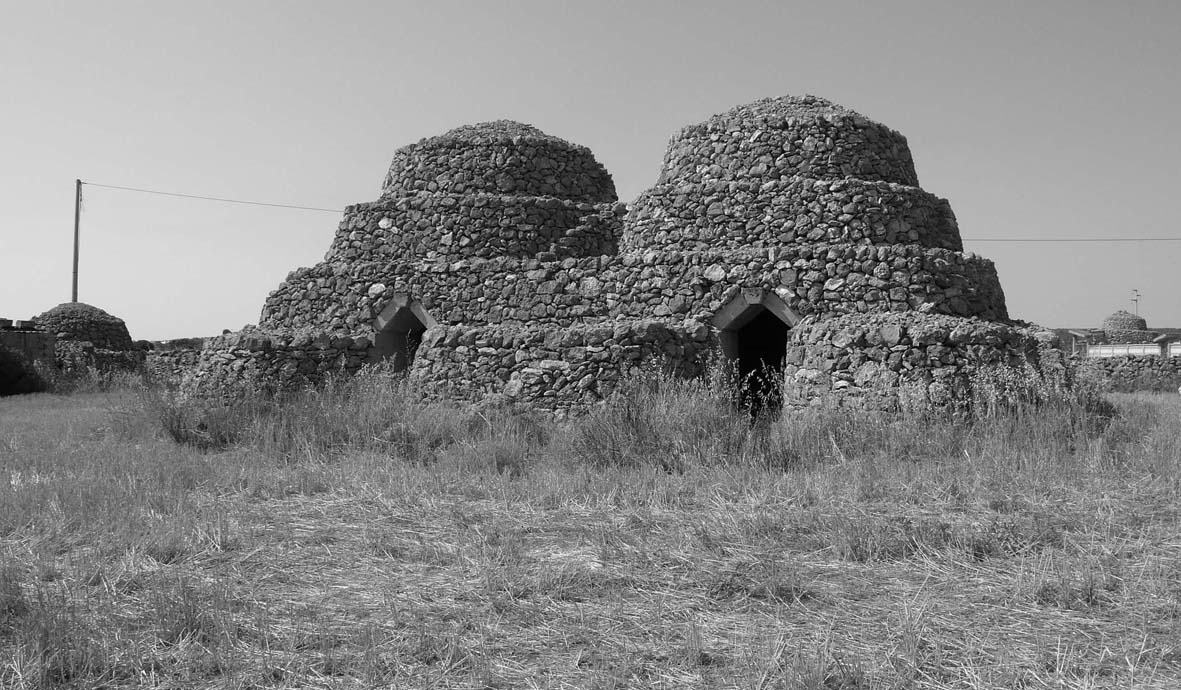
|
|
In this region casedde have a stepped structure. These impressive four-level, twin casedde, whose interior spaces are connected by a passegeway, stand near the Masseria Mirante. © Renate Löbbecke. |
|
14 - Italy: Apulia, Salento
|
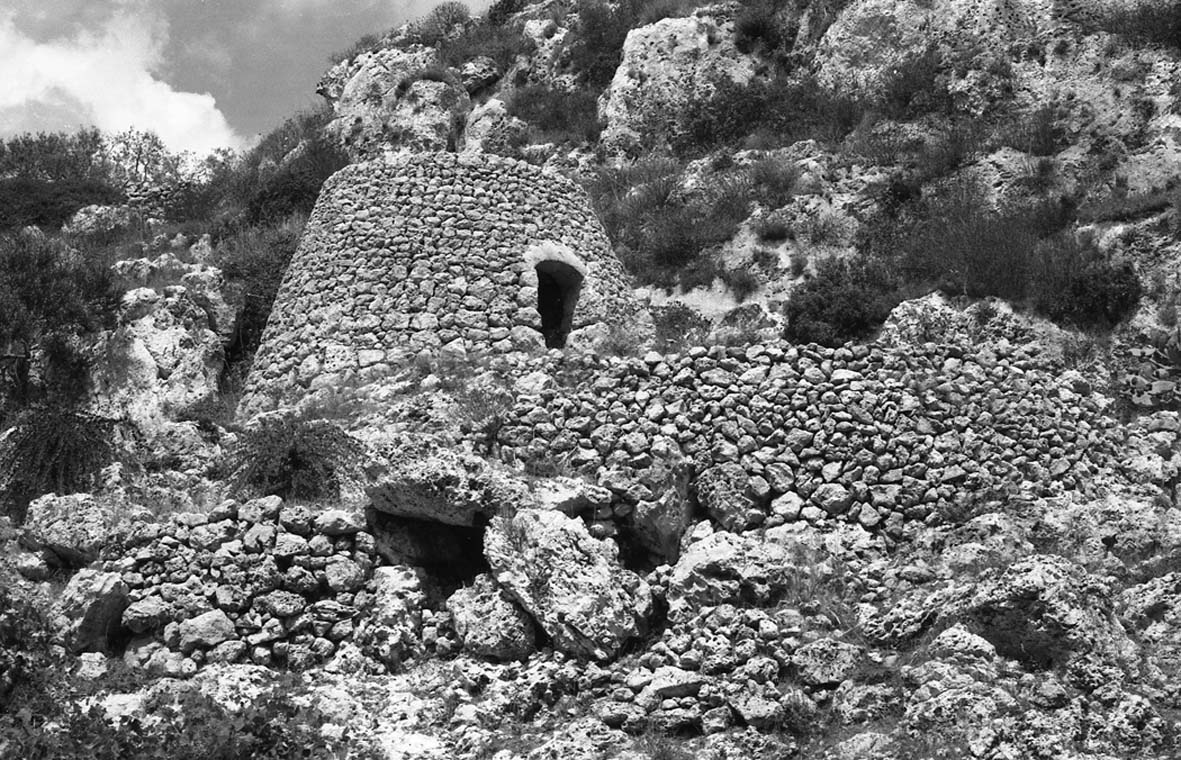
|
|
In the southern tip of the peninsula the typical chipuri are round or square stone huts with a flat roof on which fruit can be dried. Sometimes the roof is plastered over so that water can be collected and directed into a cistern. © Renate Löbbecke. |
|
15 - Greece: Thessaly, near Paliouri
|
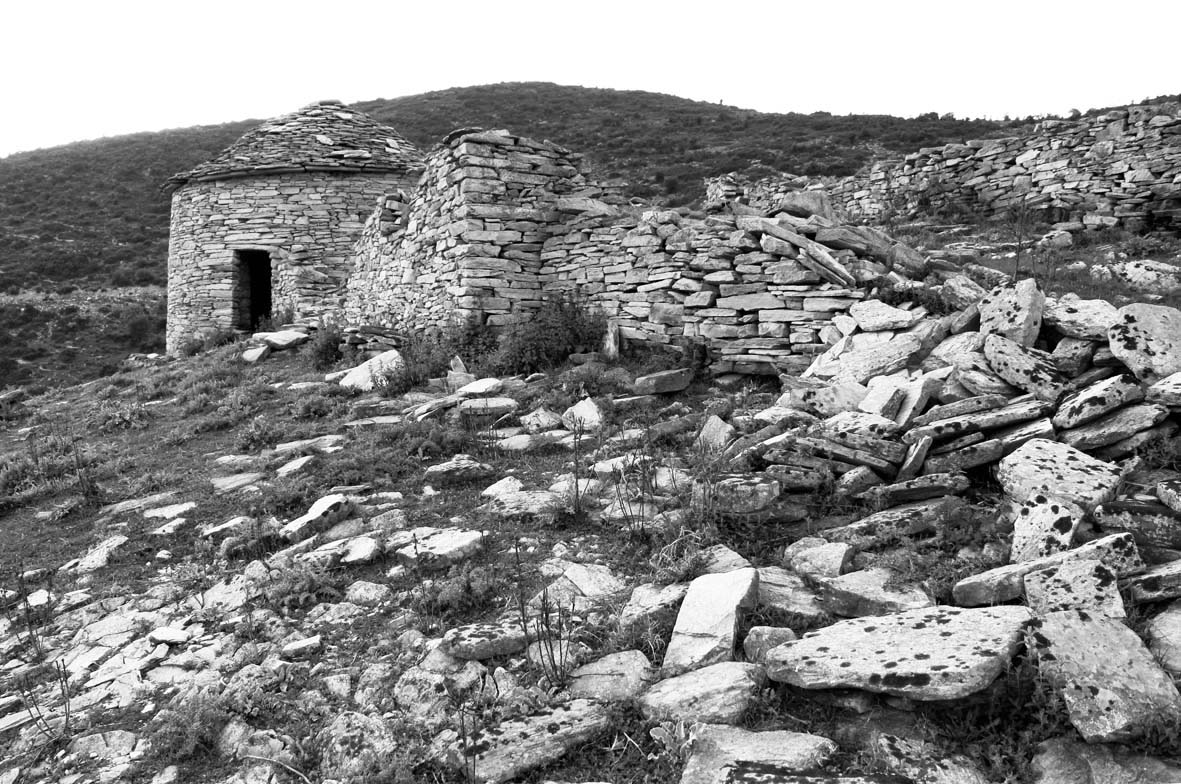
|
|
Shepherds stayed in this tholos during the summer pasturing times. Above is an array of walls with built-in-niches, drinking troughs and stone treads. © Renate Löbbecke. |
|
16 - Greece: Thessaly, near Paliouri
|
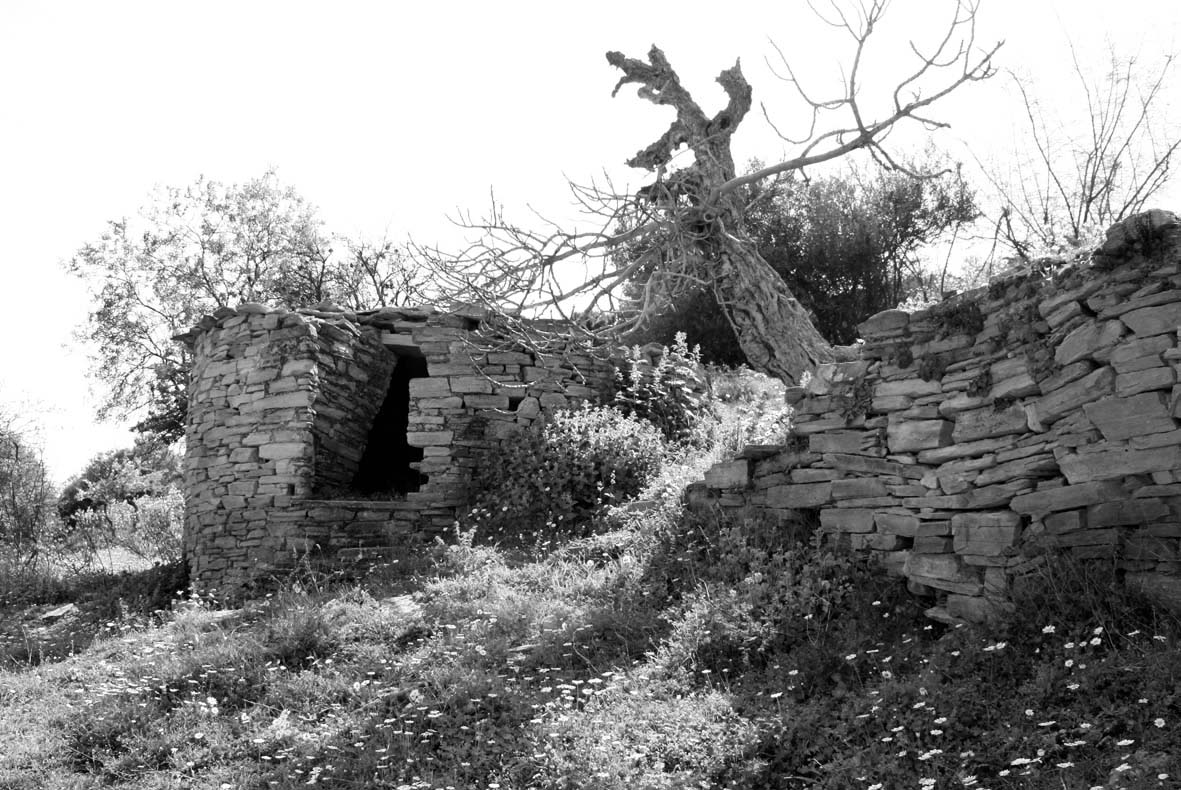
|
|
A cistern built with a corbelled dome inside. © Renate Löbbecke. |
|
17 - Greece: Crete
|
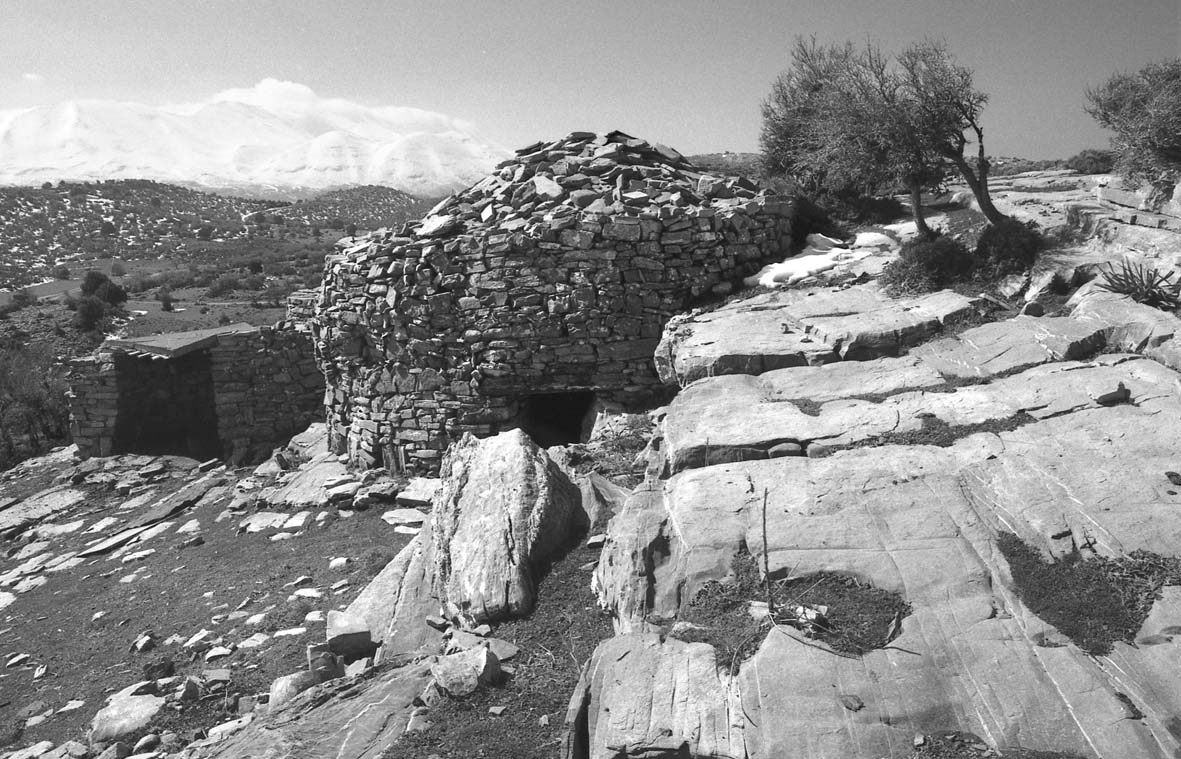
|
|
This mitato is located in high-altitude pasture areas on the Nida Plateau of Mount Psiloritis. The shepherds remained in the mountains during the summer animal migrations. So the huts are well equipped for overnigtht stays. This one leans on the rocks from which it was made. © Renate Löbbecke. |
|
18 - Greece: Crete
|
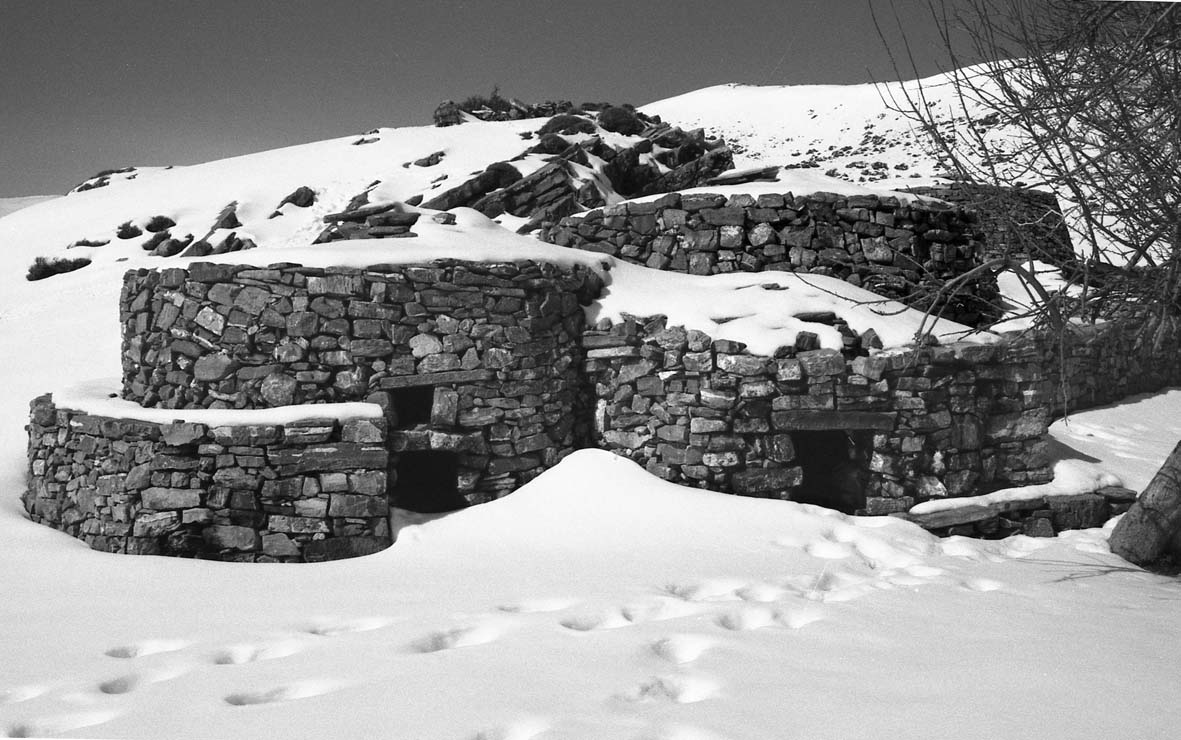
|
|
At the beginning of March 1997, most of the mitata were still covered in snow. © Renate Löbbecke. |
|
19 - Scotland: Outer Hebrides, North Harris
|
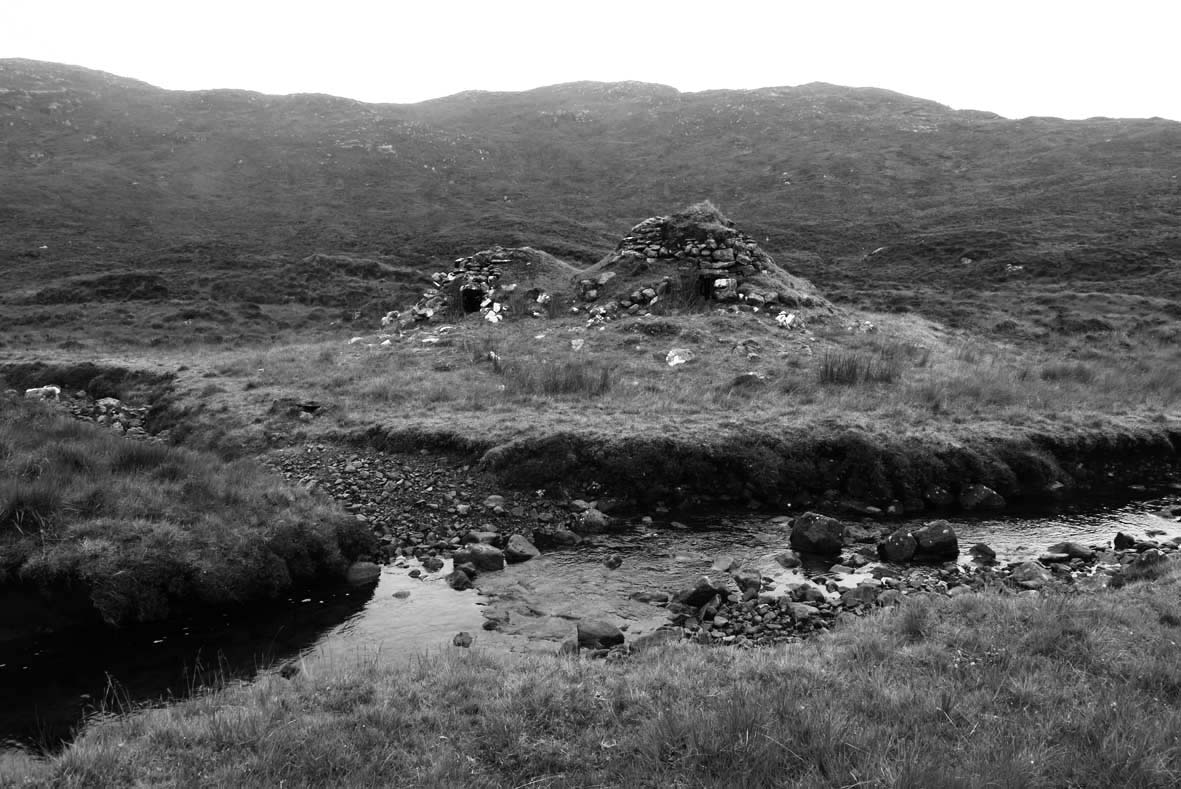 |
|
The bothans are huts which were inhabited temporarily during the summer grazing period. They are located far away from roads, so we had to make very wet hiking tours - mire everywhere on the ground and mostly rain from above. © Renate Löbbecke. |
|
20 - Scotland: Outer Hebrides, North Harris
|
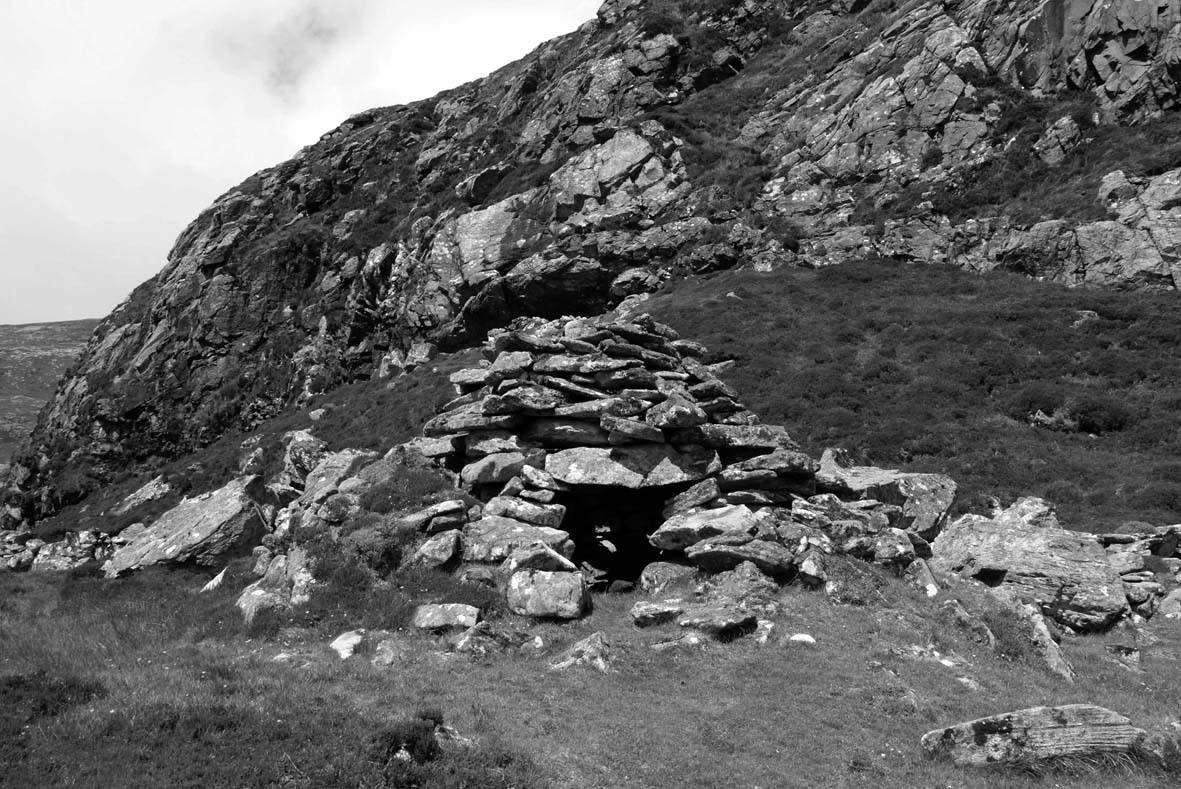 |
|
This bothan is surrounded by granite blocks from which it was built. © Renate Löbbecke. |
|
21 - Scotland: Outer Hebrides, St. Kilda, Hirta
|
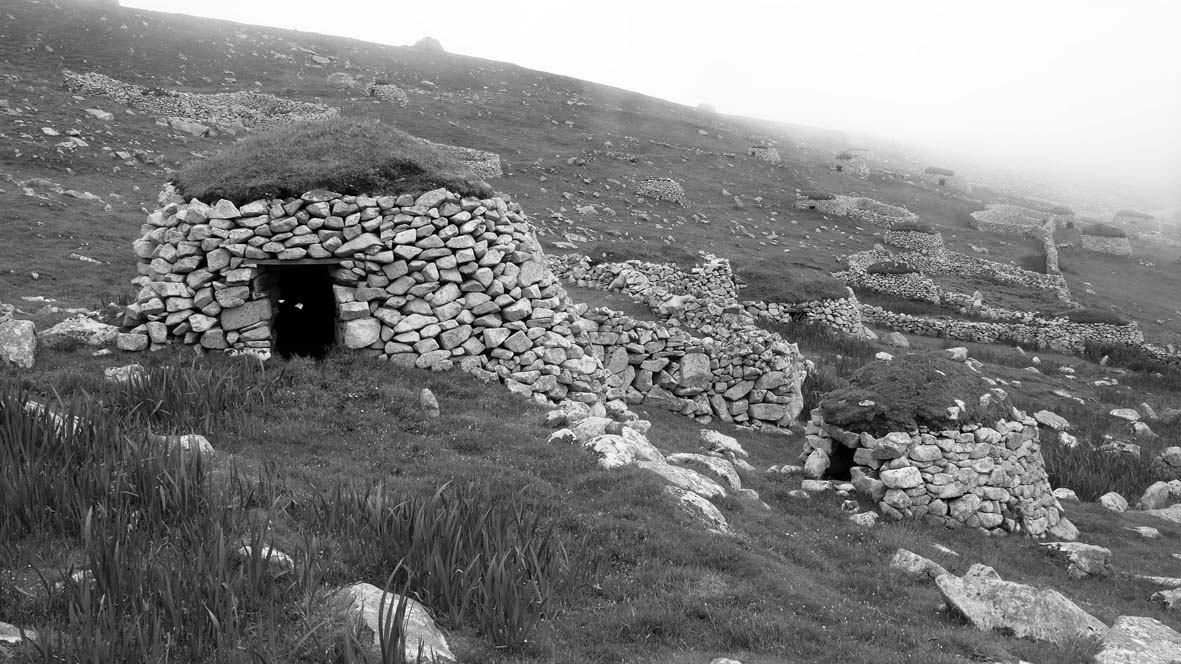
|
|
The volcanic archipelago of St. Kilda is located in the North Atlantic more than 100 km west of Harris. On the main Island Hirta, people built about 1,200 special
storage huts called cleitean, where everything necessary for living was kept: bird and lamb meat, bird eggs, fish, cereals, etc. © Renate Löbbecke. |
|
22 - Iceland: Gufuskálar
|
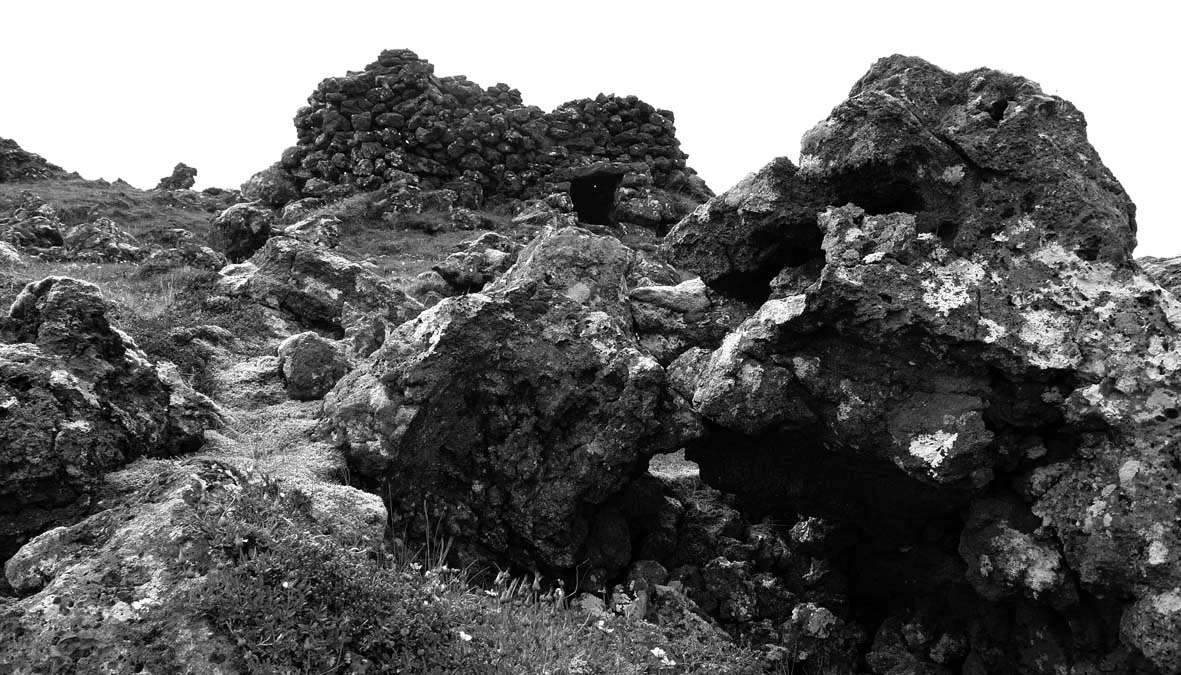
|
|
In a lava field near the coast about 100 fish drying huts or fiskbyrja are located. They are constructed from the existing lava rock. The irregular stones form a network that allows the wind to sweep in to dry the fish, while protecting it from the birds and rain. © Renate Löbbecke. |
|
23 - Iceland: near Husagardur
|
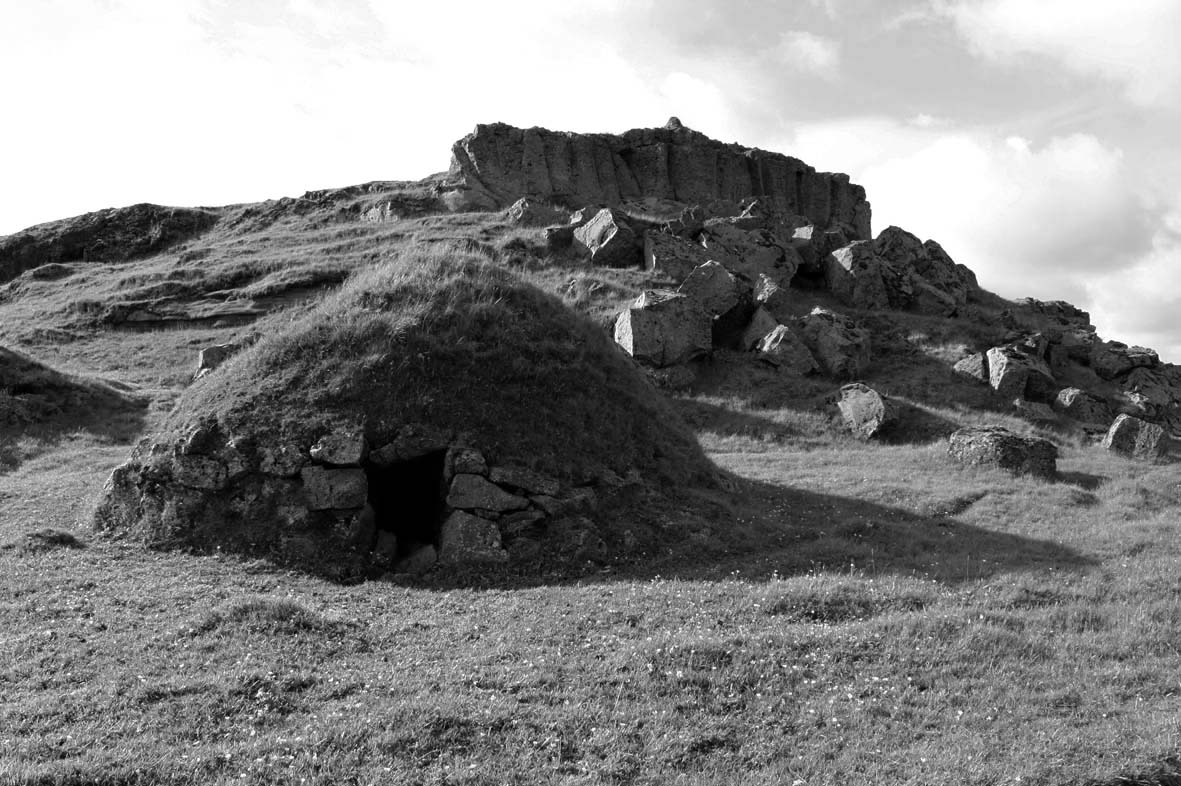
|
|
This sheperd hut was built from the basalt rocks which can be seen in the background. The stone dome is covered with peat. © Renate Löbbecke. |
|
24 - Marocco: Hinterlands of El-Jadida, Doukkala region
|
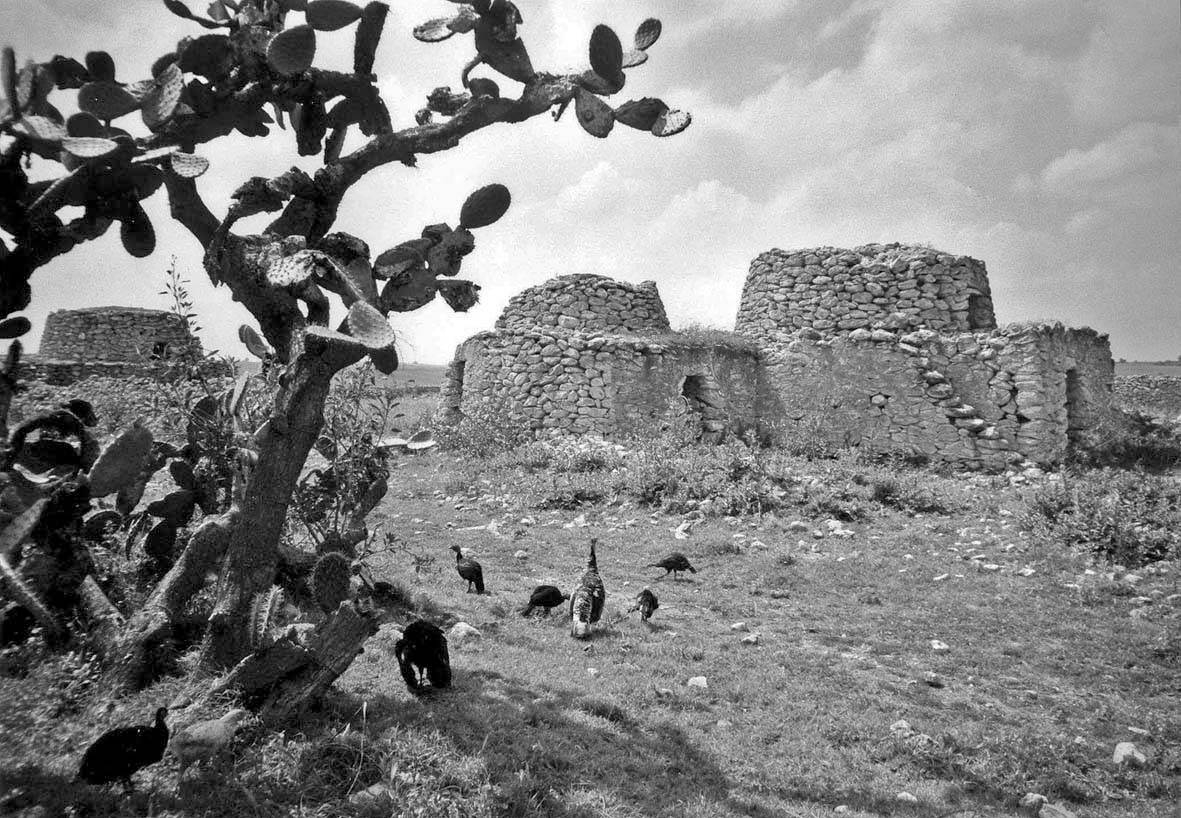
|
|
The tazotas are built of reddish sandstone and are usually used as storage rooms for grain, straw, and hay. Exterior steps lead up to the roof. They allow repairs to be made and fruit to be dried on the roof. © Renate Löbbecke. |
|
25 - Egypt: Sinai
|
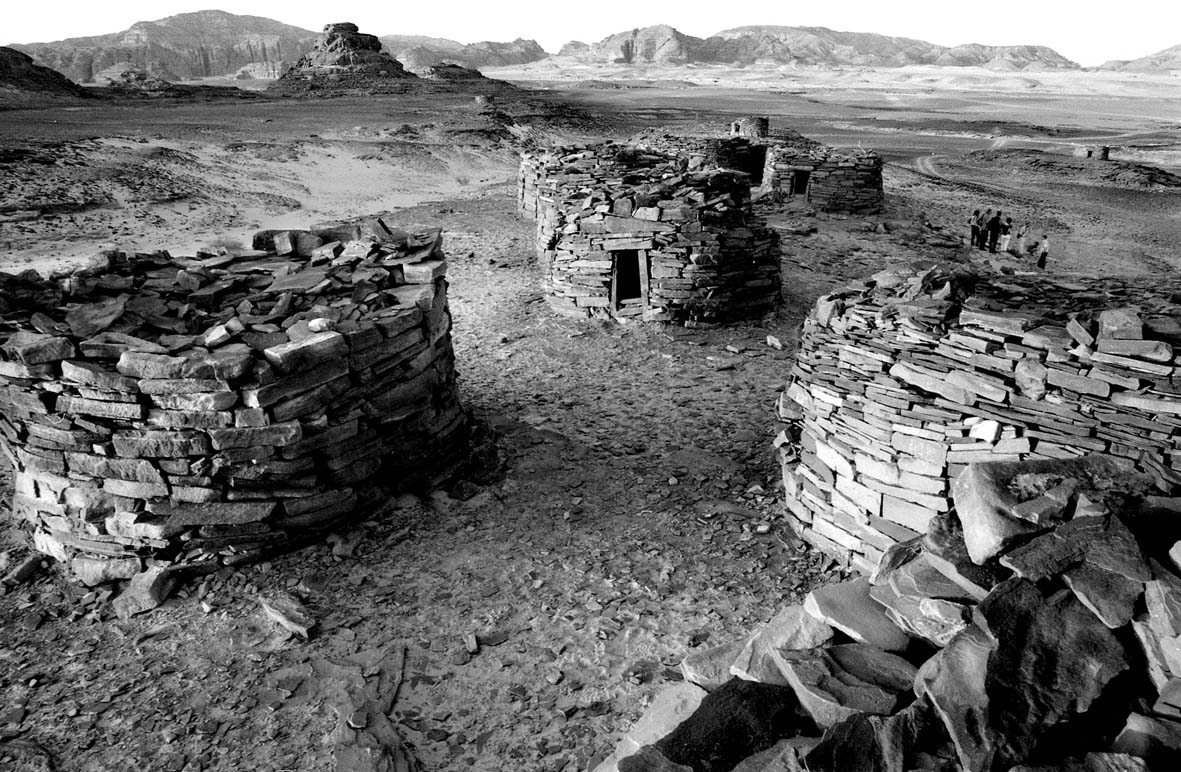
|
|
In the rocky, desert-like plain surrounded by mountains more than thirty nawamis are to be seen. These structures with rough corbelled domes inside are thought to be 5000-year-old tombs . © Renate Löbbecke. |
|
26 - Oman: Al Hajar Mountains
|
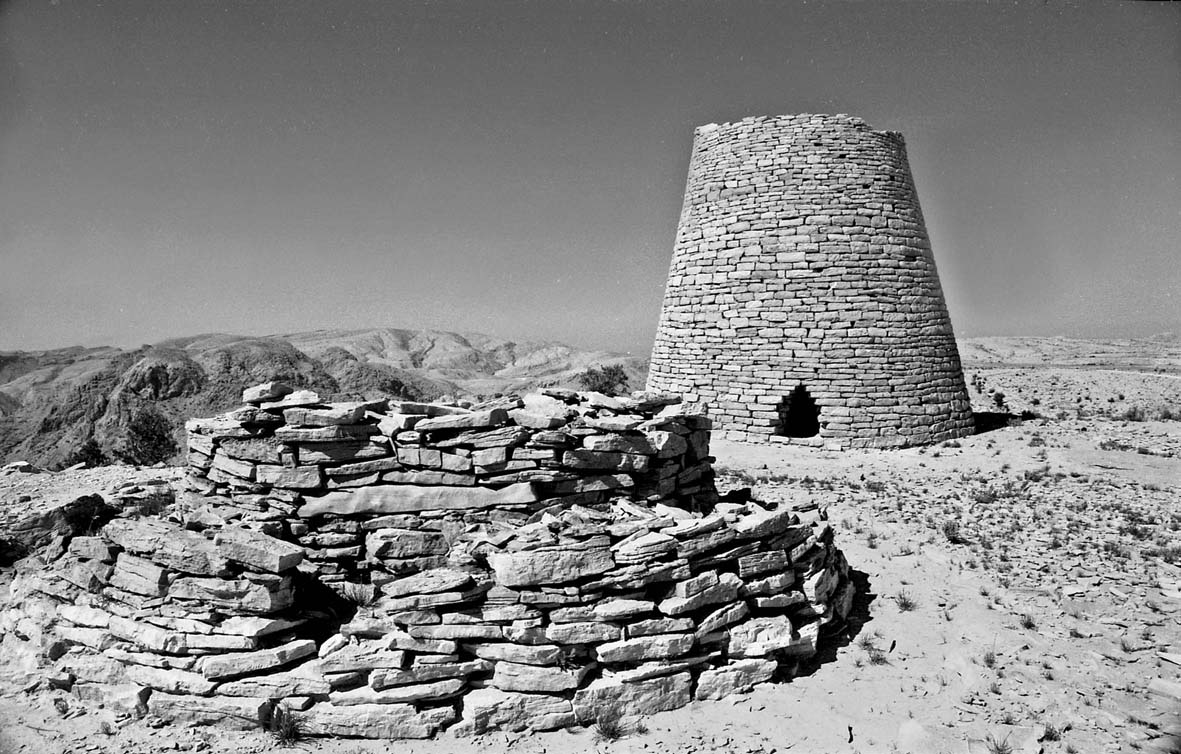
|
|
This well preserved tower tomb stands in a very remote mountain region. Groups of others are strewn across various plateaus. It is believed that they are about 5000
years old. Inside, a perfect corbelled dome was built, sometimes even two domes on top of one another. © Renate Löbbecke. |
|
27 - Oman: Al Hajar Mountains
|
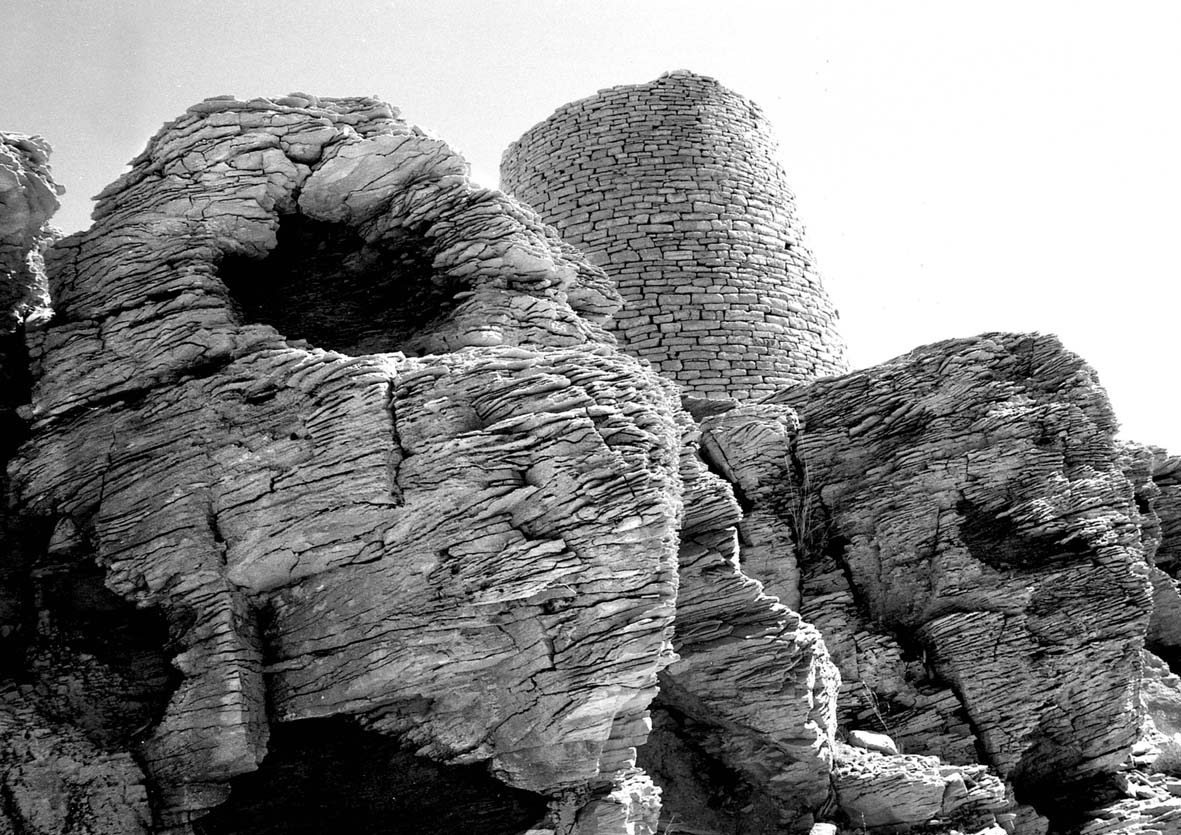
|
|
The same tower tomb contrasts with the rugged rocks nearby, forming with them a sculptural entity. © Renate Löbbecke. |
|
28 - Syria: East of Hama, Srouj
|
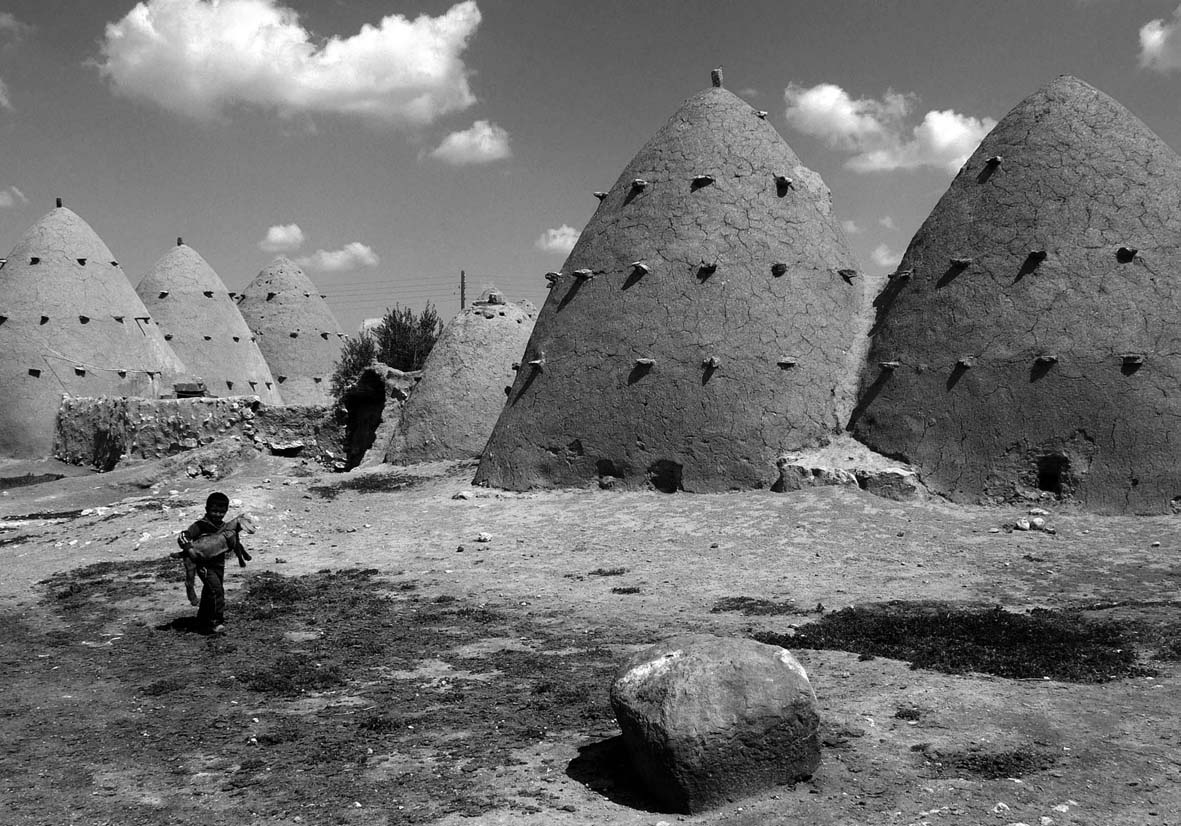 |
|
Instead of stones, here clay moulded into bricks serves as building material. The local people still live in these corbelled domes today and use some of them as storage rooms and stables. © Renate Löbbecke. |
|
29 - Syria: East of Aleppo, Hamk
|
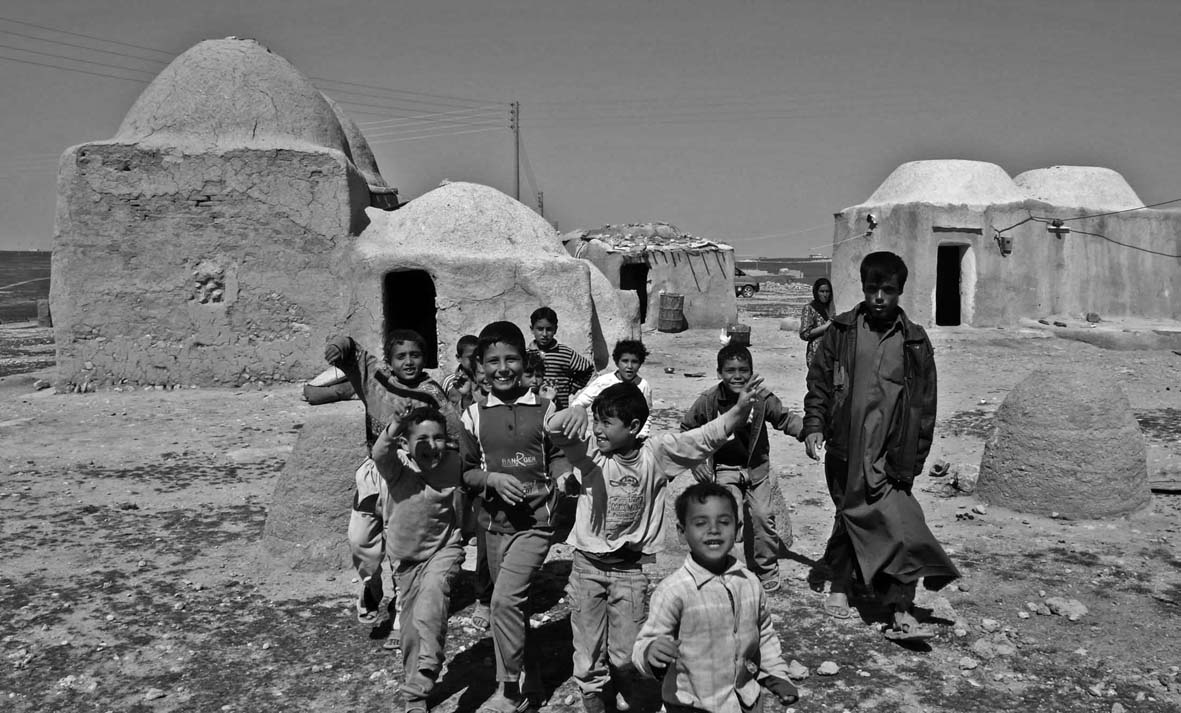
|
|
In this area, the domes rise above rectangular bases. When we visited the villages in 2007 we were warmly welcomed. What has become of these people? © Renate Löbbecke. |
|
To print, use landscape mode
© CERAV
June 13th, 2016
To be referenced as :
A selection of corbelled dome structures from various countries. Renate Löbbecke's favourite photos
http://www.pierreseche.com/photos_renate_Lobbecke.htm
June 13th, 2016
home page
sommaire photos
|